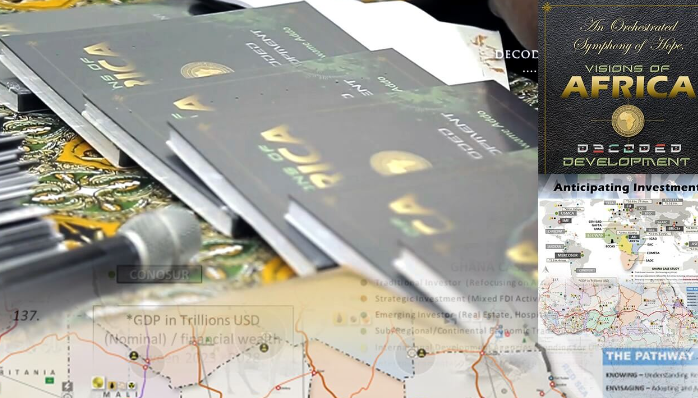-

Like
-

Views
Unlocking Ghana’s Economic potential: Expert insight on Development, Growth, and national integration. Discover the vision strategies, and challenges shaping Africa’s future.
September 09, 2024

Chapter 1: IN PERSPECTIVE
This chapter sets the stage by diving into Ghana's origins, the lasting scars of colonialism, and the journey towards economic freedom. It also explores the partnerships formed over the years and the ever-present challenge of debt. It's like getting a backstage pass to understanding the layers of Ghana's history and its quest for true independence.
Chapter 2: DECODING
Here, the Professor breaks down the physical demographics and what real development should look like. He talks about syncing policies with a national vision—essentially, getting everyone on the same page to move the country forward. It’s a great reminder that development isn’t just about big ideas but also about how those ideas are implemented on the ground.
Chapter 3: DEVELOPMENT ROADMAPS
This chapter is all about turning dreams into reality. The Professor talks about creating sector-specific, district, and constituency roadmaps to revitalize communities, upgrade slums, and improve society overall. It’s like a blueprint for anyone serious about making lasting changes in their community.
PART TWO: IMPLEMENTATION (Inspiring & Mobilizing People)
Chapter 4: ACTIVATING
Now that the vision is clear, it’s time to get people on board. This chapter is all about igniting symbolic patriotism, engaging traditional leaders, and making sure everyone—from the formal to the informal sectors—plays a role. The Professor touches on everything from inclusiveness and funding to teamwork between the government and civil society. It’s about creating a movement, not just a moment.
Chapter 5: THE FUTURE IS NOW
The Professor dives into what needs to happen today to build the future we want. It’s about adding value, building strategic human settlements, conserving resources, and renewing urban spaces. He also talks about the importance of keeping tabs on expenditure and pushing for legislative reforms. This chapter is packed with practical advice for anyone looking to make an immediate impact.
Chapter 6: A UNITED MOTHERLAND (Regional Integration)
This chapter takes a broader view, looking at how regional integration can help Africa as a whole. The Professor discusses everything from resource management and self-identity to the diaspora's role and how sports can be a tool for development. It’s a powerful reminder that Africa's future lies in unity and collaboration.
Chapter 7: THE CHALLENGE
Here, the Professor talks about the challenges ahead—applying arts and science, shifting mindsets, and advancing continental infrastructure. He also touches on the creative industry and leadership, pushing the idea that Africa can finance its future if it’s willing to reimagine itself. It’s a call to action, urging everyone to step up and be part of the change.
PART THREE: MAINTENANCE (Leaving Lasting Legacies)
Chapter 8: Anticipating Tomorrow
Looking forward, the Professor talks about the role of artificial intelligence, global trade, and investment. He also emphasizes the importance of ‘South- South’ trade and the international agenda. It’s a forward-thinking chapter that prepares us for the challenges and opportunities of tomorrow.
Chapter 9: Diagnosis
The final chapter is all about reflection. The Professor discusses moral pathways, the “Great Reset,” and how to deliver green development. He also touches on the health index and UNESCO sites, wrapping up with the idea that Africa’s vision will be fully decoded when the time is right. It’s a thoughtful conclusion to a book that’s as much about the future as it is about the present.

Share comment